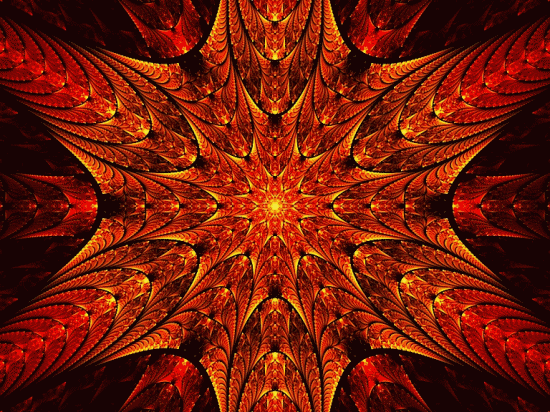Oct 03, 2012
Thermonuclear fusion reactions from deep in the core are said to drive the Sun.
Hypothetically, how does the Sun produce heat and light enough to sustain life on Earth at a mean distance of 149,476,000 kilometers?
According to spectrographic analysis, the Sun is composed primarily of hydrogen gas (71%), with 27% helium and the remainder thought to be minute percentages of oxygen, nitrogen, sulfur, carbon, and six other elements. Although every element on Earth can be seen in a spectrogram of the Sun, those 12 make up 99.9% of its mass
The Sun is 1,390,000 kilometers in diameter, with a mass approximation of 1.98 X 10^30 kilograms. The temperature measured at its surface is 5800 Kelvin and is estimated to be as high as 15,600,000 Kelvin in the core. As conventional models suggest, the Sun must generate outward radiation pressure or gravity would compress it into a relatively tiny, solid ball. The theory states that an energy source must exist inside the Sun, acting as a counter force to gravitational contraction.
Sir Arthur Eddington is considered to be the “father” of stellar nucleosynthesis with the publication of his book, The Internal Constitution of the Stars in 1929, although nuclear fusion had not been discovered at that time. It was in 1938 that Hans Bethe developed the proton-proton reaction hypothesis that would, he supposed, provide enough energy to power the Sun. The proton-proton cycle is now “known” to be the source for 98% of solar energy production.
Standard theory states that when the Sun condensed out of the nebular cloud that is supposed to have been its nursery, the gases were compressed by gravity until they reached temperatures greater than ten million Kelvin. At that temperature, hydrogen atoms are disrupted into individual protons and electrons, leaving the protons free to collide with one another. It is these initial proton collisions, it is said, that are the first step in a reaction called the proton-proton (p-p) chain, as mentioned above.
When protons collide at those high temperatures, they are thought to be moving fast enough for them to fuse into other particles: deuterium, a positron and a neutrino. Deuterium is a proton-neutron combination, while a positron is a positively charged electron. Neutrinos are conventionally thought to be similar to electrons, except they do not carry an electric charge and are almost massless. Being neutral, they are said to not be affected by the electromagnetic forces that affect electrons.
The second stage in the p-p reaction is the formation of a helium-3 nucleus when the deuterium captures another proton, while at the same time emitting a gamma ray. A helium-4 nucleus and two neutrinos are the end results of the reaction, although it can follow one of many different reaction paths.
In reality, as Electric Universe theorist Wal Thornhill points out, stars reside within plasma sheaths perhaps as great as a light-day in extent. “It is clear from the behavior of its relatively cool photosphere that the Sun is an anode, or positively charged electrode, in a galactic discharge. The red chromosphere is the counterpart to the glow above the anode surface in a discharge tube. When the current density is too high for the anode surface to accommodate, a bright secondary plasma forms within the primary plasma. It is termed ‘anode tufting.’ On the Sun, the tufts are packed together tightly so that their tops give the appearance of ‘granulation.’”
The stars receive their power from outside, not inside. Any nuclear reactions are taking place on the surface of the Sun and not in its core. The solar wind is an electric current connecting the Sun with its family of planets and with its galactic clan, so the 90-year-old theory of fusion firing the solar furnace needs to be reexamined.
Stephen Smith













